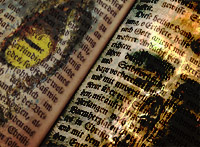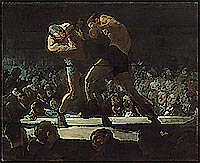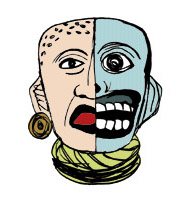Formerly published as ‘In Dark and Silent Majesty’, revised and expanded
Reading from The Horror Stories of Robert E. Howard, Del Rey
Kelly the Conjure-Man was—not surprisingly—unsold in Howard’s lifetime. This story has a special place in my heart, for when I read it first, ten years ago, I was reminded of my friends at about the age of ten, who would tell stories about an old man that lived in a certain un-kept house. I walk by that now renovated house weekly, as it sits in gentrified, yuppie purity.
In the piney woods of Arkansas, 75-miles northeast of the great Smackover oil field, was a dense area of winding rivers and streams where local oral tradition credited much strange doings, including the voodoo rites of certain former slaves. The most notable of these was Kelly the Conjure-Man.
On Tulip Creek, which wound like a snake, “Kelly lived apart in dark and silent majesty…A fine figure of barbaric manhood he was, perhaps six foot in height, mighty shouldered, supple like a great black panther…He had little to say to white men or black folks. Silently, like an uncrowned king of dark Africa, he stalked along the roads…”
This reader is missing the clowning, “yessum massa” step-en-fetch Negro that was being lampooned in film at the very time Howard wrote this story, which obviously derives from his “Aunt” Mary’s canon of black folk tales.
Kelly made a name for himself as a healer and a dispeller of conjures that had been placed upon people by other magic workers. Kelly eventually put the local blacks—who, unlike the whites in the area, suffered terribly from tuberculosis—under a series of enchantments that smacked of mesmerism. The local blacks began to go violently insane, for which an obscure illness and drug use were suspected as the cause, but were more likely the workings of a conjure-man.
Howard was very interested in mesmerism and seemed to think that certain unassimilated races of white people—like the Scotch-Irish he came down from—where relatively immune to the powers of suggestion due to their naturally violent and rebellious nature.
The specific curse Kelly was said to have laid on people involved a belief that snakes inhabited their stomachs. After some time Kelly disappeared as mysteriously as he had arrived. The local whites wondered as to what became of him. Here, Howard’s narrative voice concludes, “In every community of whites and blacks, at least in the South, a deep, dark current flows forever, out of sight of the whites who but dimly suspect its existence.”
The narrator, never knowing the truth, concludes by wondering if Kelly went along his mysterious way, or if the blacks rose up and drowned him in the creek outside of his conjure hut, which remained strangely empty with the door hanging partway open.
This past Saturday, as my young friend, Negrodamus bought me a steak lunch, I read him this brief three-page story and asked what he thought of it. He was tickled to laughter over the narrative’s use of the term “darkies” to describe blacks. He found it a compelling story, and was not at all ambivalent about the ending, saying, “Oh, those niggas rose up an kilt his ass. If you got a false healer in the community, his ass has got to go.”
As to my question about whether the story was insulting, demeaning, or smelled of racial hatred, he answered, “Kelly was respected by the whites—they didn’t mess with his voodoo ass. And the whites didn’t interfere with the blacks taking care of their own business. What’s the matter with that? Since when is live and let live—or even live and let die—racism?”
Notes
From the 1890s through the 1930s it was a popular belief among Anglo-Americans that blacks were subject to violent mob rage due to the use of illicit drugs. Such sentiments were a factor in regulating banning self-medication in the U.S. It is interesting to speculate as to whether or not the sometimes comically hysterical newspaper stories concerning marijuana-induced Negro rage, in any way inspired Howard. His—often black of Asian—sorcerers used intoxicants on themselves and others, just as black and Chinese men where often thought to seduce white women through the use of opiates.
Under the God of Things











